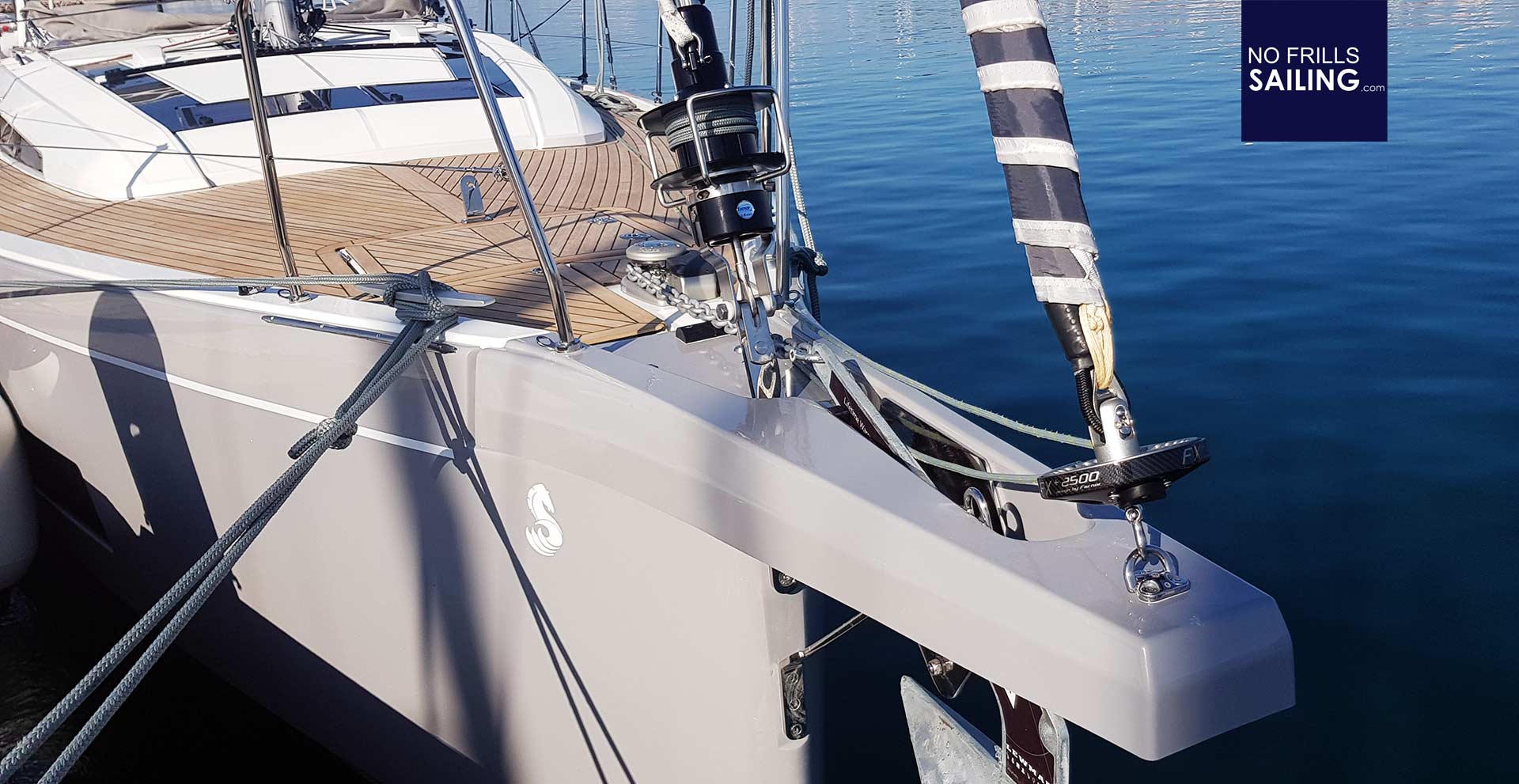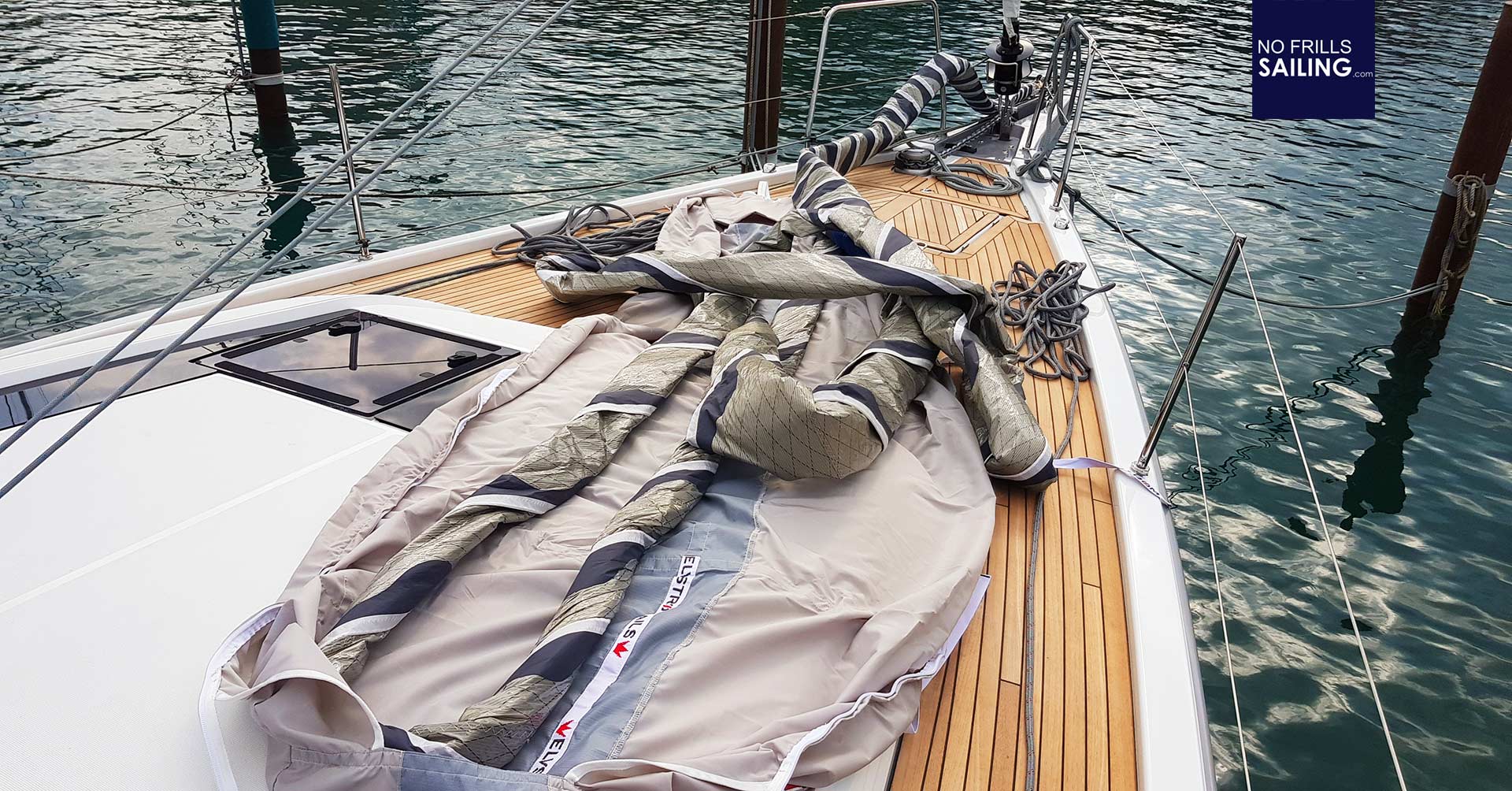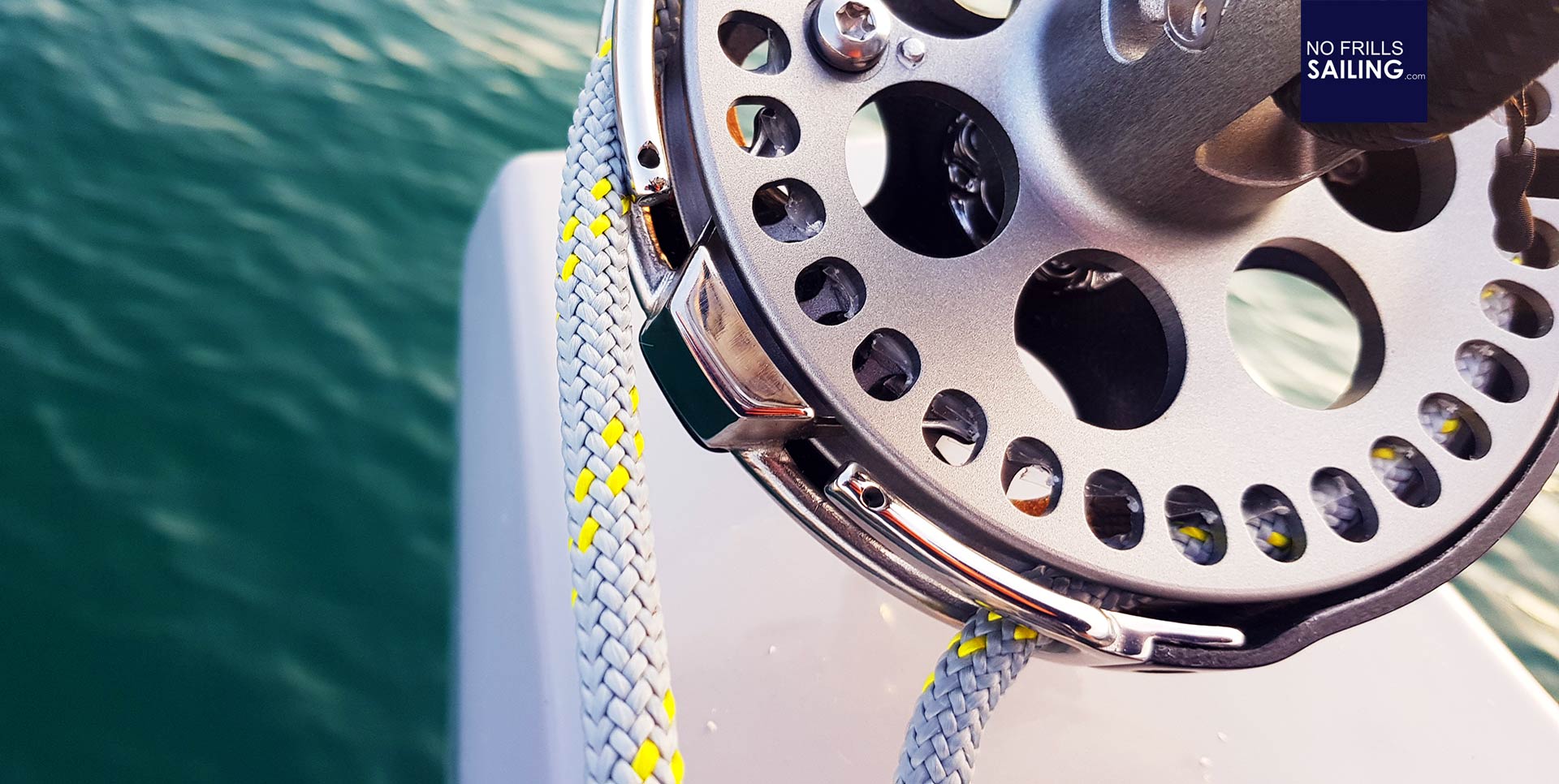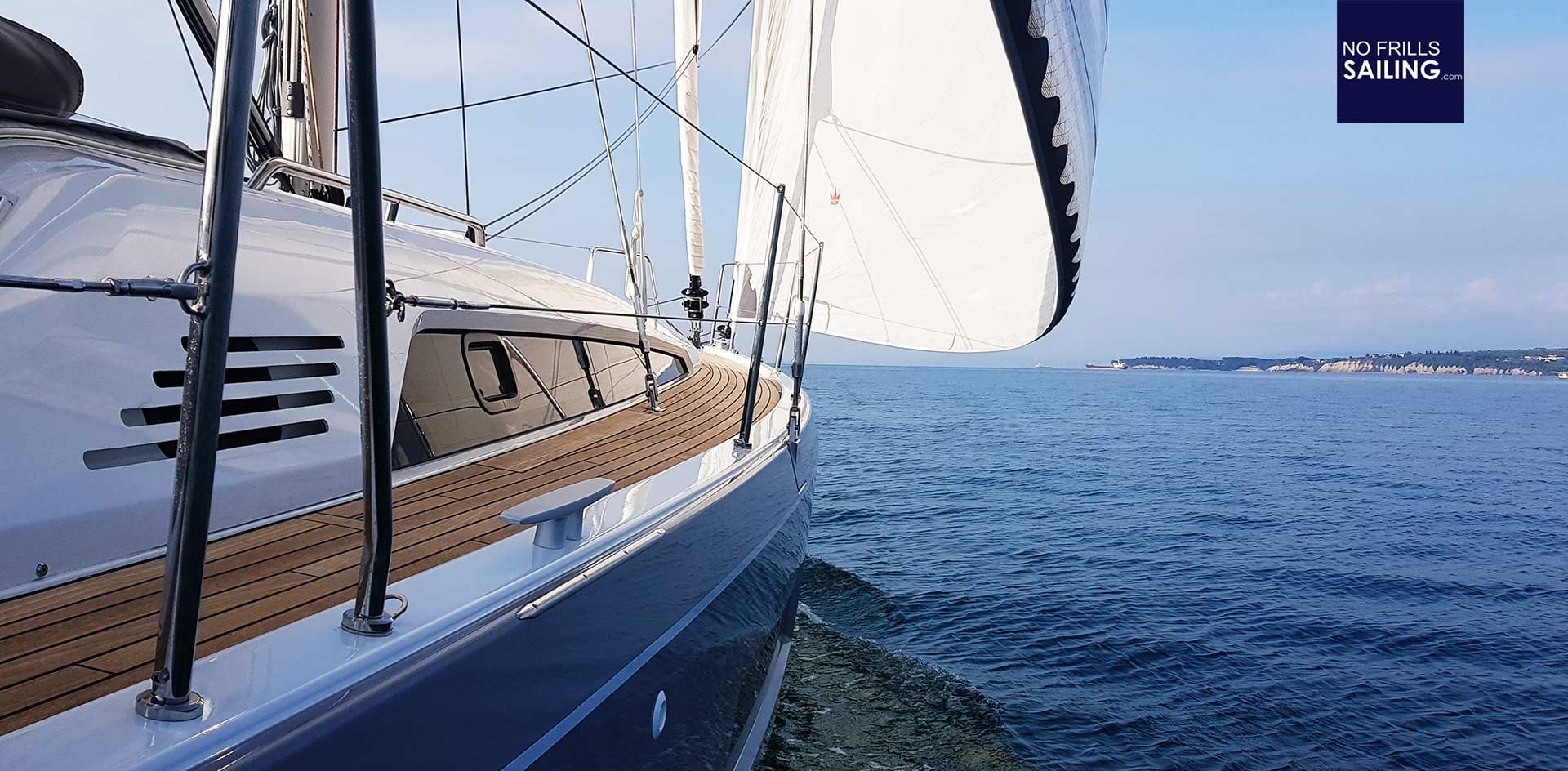Although we all love sailing in nice conditions with true wind speeds between 15 and 20 knots under full canvas we often have to take in much, much lighter wind conditions with wind speeds well below 10 knots. Often this means no casting off for boats as skippers think (or know) that their yachts won´t perform under these conditions. My experience with cruising boats is furthermore, that yachts fitted with in-mast furling mainsails and self-tacking jibs sufficiently lack sail area thus needing much more wind to pick up speed. A cure to light wind conditions is a Code 0.

Last week during a commissioning and handover of a brand new Oceanis 46.1 to a client I was happy that the couple had followed my advice and equipped their pretty yacht in addition to self-tacking jib and in-mast furling main with a large Code 0. So that was my first time too with a Code 0. What does “Code 0” mean? Well, first of all the Code 0 is used in wind speeds of below 8 knots true, some ride it in winds with with max 10 knots. The Code 0 is a sail that is best utilized in 45 to max 90 degrees AWA and is considered the lightwind-upwind sail. For wind angles greater than 90 degrees, a Gennaker is the sail of choice.
Installation and start-up of a Code 0
Most Code 0 light wind sails are offered as a package together with a furling mechanism on a continuous reefing line and a swivel shekel. It comes as a handy package and for a boat with 46 feet like the Beneteau the Code 0 can be carried by one man, although it´s pretty heavy. Fitting the sail is as easy as ABC.

First of all you fit the furler to the bow sprit of you boat. Make sure your yacht is light wind sails-approved as the bow sprit needs to have a martingale stay: Even in light winds these large sails can deliver quite some punch of tensile force into the GRP-bowsprit of a boat. Fitting the furler is a no-brainer since this is done by means of a simple shekel. Make sure you have a safe stand on the bow sprit, maybe refrain from installing the sail when underway as you may fall off the boat.

With the furler – in this case a Facnor FX 2500 – I did have some starting problems. As the reefing line was very thin it happened almost every time we unfurled the sail that the reefing line was pitchforked out of the furler through the stainless steel openings you may detect on the pictures. I tried to avoid this effect by changing the angle in which the line enters the furler and adjusting the tension in the line: The reefing line is lead abaft over a block that is attached to the stanchions. Neither of both helped.

After talking to the pros they gave me two hints: Either choose a thicker reefing line or – better choice – use the two holes in the stainless-steel bearings to fit some thin Dyneema between them so that the reefing line cannot leave the leads. Since we adjusted this detail, furling and unfurling of the light wind Code 0 worked flawless. Sailing a Code 0 however is pure pleasure!
Light wind performance of a Code 0
Since you only take out this sail in very light wind conditions, meaning in nice weather, you do not have to expect much hustle on your yacht. Unfurling is done most of the part by the wind itself. You just put the leeward sheet onto the Genoa-winch and trim the sail – off she goes! Manoeuvering under Code 0 is on the other hand bit tricky and needs to be practiced, however, again since you utilize this kind of sail in light wind conditions, don´t expect too hard practicing.

A tack is done by furling in the Code 0 almost completely, then put the bow through the wind and have the Code 0 unfurled again. That is the only way to get the large sail area safely around the forestay with your furled Jib/Genoa. Gybing is easier: You just put your stern -slowly- through the wind and ease the windward sheet by at the same time taking in leeward sheet. Try to have the Code 0 filled with wind from abaft all the time. Direct the sail around the forestay with both sheets and complete the gybe. This action will take some time to practice and is done best with two people working both sheets. Advantage of gybing over tacking with a Code 0 is that you do not have to take in the sail thus won´t lose any speed.

I was astonished of how easy the Code 0 is utilized. Once fitted to the bow it is even easier than flying a Gennaker. Once sheeted and trimmed the Code 0 will deliver quite a punch to your boat: When shaking down the Oceanis 46.1 in winds of less than 7 knots true our yacht was as quick as 6 knots! Amazing how efficient these modern laminate sails are working. From my point of view this shakedown cruise under Code 0 was a true revelation and for the future no question: Every sailing yacht needs a Code 0 for upwind/reaching courses in light winds and a Gennaker for downwind (and stronger wind speeds) for sure. You won´t buy a Porsche and save on the tyres, won´t you?
You may also be interested in these articles:
Gennaker sailing an Oceanis 30.1
Foul weather sailing tactics
How to tackle our first trip as skipper
